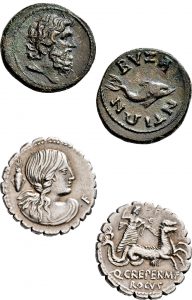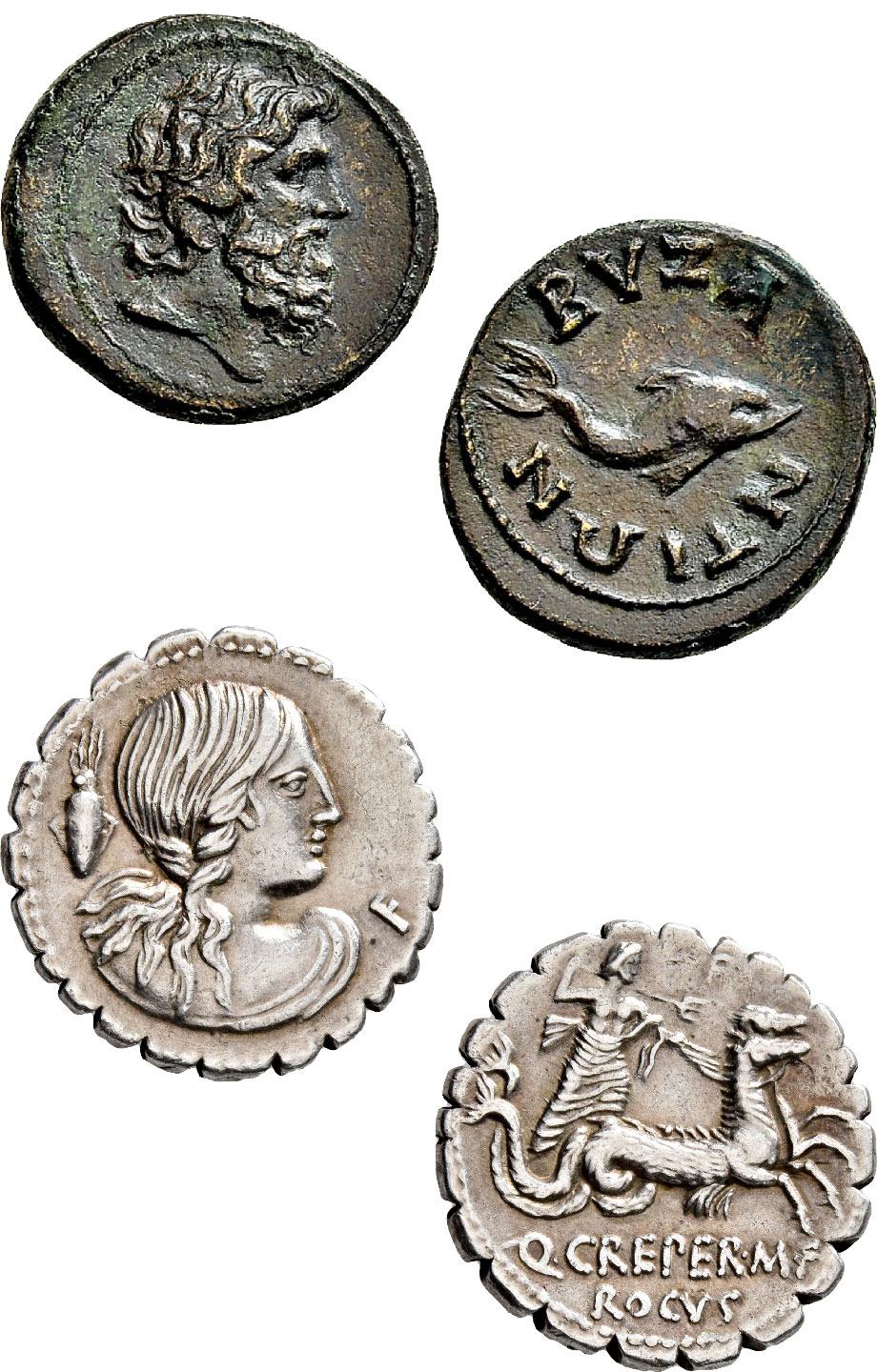- Introduction
- Seashell Fossils
- Between Two Rivers: Mesopotamia
- The Nile’s Gift: Egypt
- Minoan and Mycenaean Civilizations
- Fishing in the Ancient Greek and Roman Worlds
- Fish Consumed as Food
- Fish and Prophecy
- The Triumph of Poseidon
- Istanbul Strait and Byzantion
- Bonito Fish and the Golden Horn
- Coins and Fish
- Tuna Fish
- Friendship of Dolphins
- Tears for the Moray Eel
- Giant Mussels
- King Sea Snail
- Credit
- Exhibition Installation Video
- Exhibition Photos
- Exhibiton Catalog



Coin of Byzantion, bronze. Head of Poseidon, Sea God, on the obverse and dolphin on the reverse. Roman Imperial period
© Dr Busso Peus 9, 178
Roman coin, silver denarius. Bust of Amphitrite, Queen of the Sea, on the obverse and Poseidon riding double sea horse on the reverse. Roman Republican period
© Leu Numismatik 2, 212
Some ancient city-states put depictions of sea creatures such as fish,
dolphins, octopuses, seahorses, oysters and crabs on their coins. These
cities were situated on the shore of a lake, river or sea and featured the
local resources (natural wealth) on which their cities depended both to
their own communities and to the outside world.
On the 5th century BC electrum coins of Kyzikos (Erdek), the tuna fish was
used as a symbol next to the main depiction on many coins. So the tuna
fish has become an important determinant for attributing these coins
to Kyzikos. Likewise, on coins minted by Byzantion (Istanbul) during the
Roman Imperial period, two fish were sometimes depicted side by side
with a dolphin occasionally placed between the two fish. The depiction
of fish on its coinage indicates that Byzantion attached much importance
to fisheries as a source of its livelihood. As a matter of fact, ancient
writers make numerous references to Byzantion’s fishing industry.
Occasionally, dolphins are depicted in a highly artistic form,
as on coins of Abdera or on Athenian weights.
The cities of southern Italy and Sicily have lovingly and frequently
depicted sea creatures on their coins. For example, a crab with welldefined
anatomical features is depicted on the reverse of 5th century BC
silver coins of Akragas. An octopus with open arms, on the other hand,
covered the reverse of silver coins of Syrakusai (Syracuse) and Eretria. The
seahorse shown under the bow of the ship on the reverse of a silver coin
of Phaselis (Tekirova) is quite remarkable, for its anatomical features are
accurately depicted. However, on the reverse of a silver coin of the Roman
Republic (1st century BC), a pair of seahorses is depicted. This depiction
does not show real anatomical features but rather a mixture of a horse
and a fish (hippocampus). On the obverse of this coin is a squid behind
the head of Amphitrite, the Queen of the Sea.
